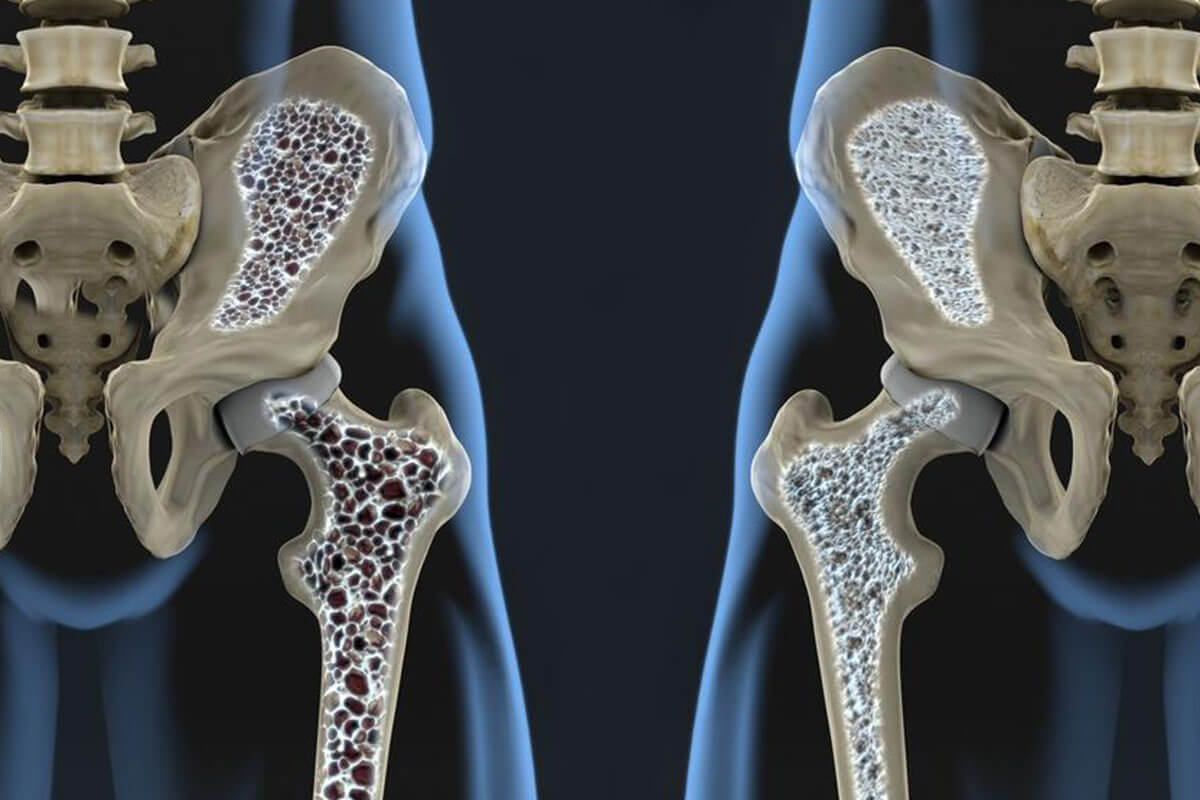These Common Medical Conditions are Causing Your Osteoporosis Bone Loss

There are certain common medical conditions that are specifically linked with osteoporosis bone loss. Here’s what you need to watch out for.
The bone is a living tissue, and as such it is constantly being broken down to create new bone. However, when the rebuilding process is slower than the breaking down process, the bones become fragile and brittle. This is what happens when you develop osteoporosis. Osteoporosis is more common in women than men, and affects about 200 million women all over the world. Even though this disorder affects women of all age and races, it is more common in older white and Asian women. When you are suffering from osteoporosis and it reaches an advanced stage, fractures become a part of daily life.
The fractures that are associated with osteoporosis usually occur in your spine, hip, and wrist. The bones become so brittle that even everyday activities like bending over or stepping on to the pavement can result in fractures. Early stages of osteoporosis do not show any symptoms, but when it reaches an advanced stage, symptoms like loss of height, back pain, neck pain, fractures, and stooping posture can be seen. A simple bone density test that shows the extent of osteoporosis bone loss is used when you want to diagnose this disorder.
Some of the risk factors of osteoporosis include body frame size, age, family history, race, sedentary lifestyle, sex, and eating disorders. Your treatment plan will include a combination of medications, lifestyle modifications, and dietary changes, and mainly depends upon your risk of breaking any bone.
But what exactly causes osteoporosis bone loss? There is no definite answer to this question. However, there are some common medical conditions that are linked with osteoporosis bone loss either because of the medications used to treat them or because of the disease itself. These diseases may cause osteoporosis bone loss, which in turn increases the risk of developing this disorder. These medical conditions are:
- Rheumatoid Arthritis and Lupus
Rheumatoid arthritis or RA and Lupus are autoimmune disorders where the immune system attacks its own healthy tissues and cells. There are around 3 million adults in the United States that suffer from either RA or lupus. Lupus is particularly problematic because it is much more common in women between 15 to 45 years, the years that are considered to be the peak bone building years. According to the associate professor of medicine and director of the Bone Health and Osteoporosis Center at Northwestern University, Dr. Beatrice Edwards, “Anything that impedes the growth of bone during these years puts you at greater risk for osteoporosis” . Osteoporosis bone loss may be caused by lupus or RA.
- Diabetes
Scientists still haven’t been able to figure out why people suffering from type 1 diabetes are likely to have lower bone density. Dr. Edwards says, “It seems that high blood sugar may shut down bone formation, just as with steroids. Since type 1 diabetes usually develops in childhood, when the body is still building bone, someone with type 1 diabetes may never have the opportunity to reach their peak bone density.” If the peak bone density is not reached it may lead to osteoporosis bone loss, which increases the risk of development of this disorder.
- Asthma
Around 20 million people in the United States suffer from asthma, however, asthma itself does not lead to osteoporosis bone loss. It is the medications like the corticosteroids that are used to treat asthma which increase the risk of osteoporosis. These corticosteroids are indeed effective in relieving wheezing and shortness of breath associated with asthma, but they also have several side effects such as osteoporosis bone loss.
- Hyperthyroidism
When your thyroid gland becomes overactive and produces excess thyroid hormone, it can lead to osteoporosis bone loss. Dr. Edwards explains, “Hyperthyroidism increases the number of bone-remodeling cycles you go through. And after age 30, every bone-remodeling cycle is inefficient. You lose bone mass rather than building it. So the more cycles you go through, the more bone mass you lose”.
Some of the other medical conditions that are linked with osteoporosis bone loss are multiple sclerosis and celiac disease. It is important to know which diseases lead to osteoporosis bone loss and increase your chances of developing this condition. This knowledge will help you take the necessary steps to prevent the osteoporosis bone loss. You can work towards building healthy bones by taking vitamin D supplements or by making necessary lifestyle changes.


